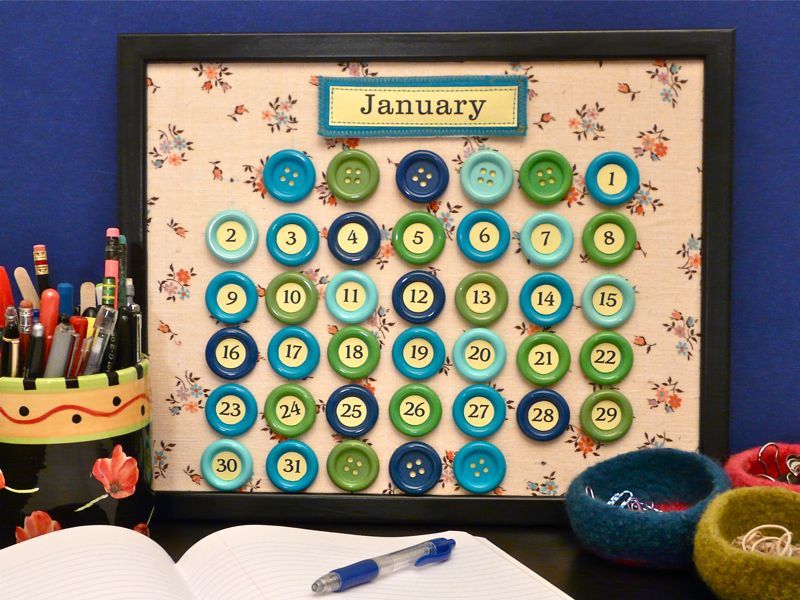I know calendars (and clocks and address books) are quickly becoming computer-centric tools, but I like the old-school charm of this desk calendar. Make it once, and you can use it forever – just move the numbers to their correct location each month, and change the nameplate!
Materials
- Picture frame, 11″x14″ or 16″x20″, see below
- Sheet of foam board or 1/2″-thick cork
- Ruler
- Craft knife
- Piece of woven fabric, about 24″x30″
- Spray adhesive
- Masking tape
- Scissors
- 42 large buttons, 3/4″ to 1″ in diameter
- 42 flat-head thumb tacks
- 5 sheets card stock, for numbers and nameplates
- Downloadable name/number template
- 3/4″ circle punch, optional
- E-6000, or similarly strong glue
- Water-soluble fabric marker
- Fine-point Sharpie
- 2 squares of wool or acrylic felt
- 1 sheet of Friendly Felt, or lightweight chipboard
- Sewing machine and thread
- 2 sets Velcro dots plus 22 “loop” style dots (the softer half of a Velcro pair)
- Greeting card envelope
Note: All dimensions given here are approximate, so you have some flexibility with the button size you use. Here’s how I recommend choosing your picture frame: lay your buttons out in six rows, with seven buttons in each row. Leave a small amount of space between them. Now, measure now much space this arrangement takes up, and then choose a frame that fits.



